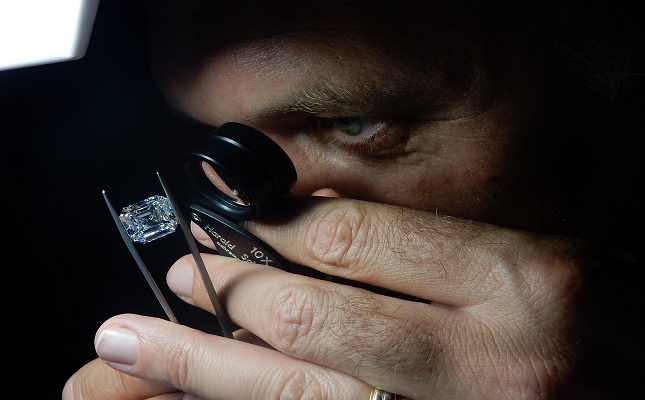Press Release: World-leading Synthesis Experts and Independent Lab Gemologists Discussed Production and Identification of Smallest CVD and Largest HPHT Synthetic Diamonds at MGJ Conference in Greece
August 27, 15
(Press Release) – At the end of June, Athens was host to a new series of conferences – the Mediterranean Gemmological and Jewellery (MGJ) conference, organised by both the local Independent Gemological Lab (IGL) and CGL-GRS Swiss-Canadian Gemlab.
The event featured an international line-up of speakers active in synthetic diamond production and treatments, while gem lab scientists (GGTL laboratories and CGL-GRS lab) and De Beers covered their screening and detection.
Major topics at 1st Mediterranean Gemmological and Jewellery Conference included:
Update on the production of synthetic HPHT and CVD diamonds and how to identify them. Comparison of the characteristics and value of Mozambique rubies compared with Burma’s Production and gemmological characteristics of Argyle coloured diamonds. Dr Thomas Hainschwang from GGTL laboratories in Liechtenstein was presenting methods to detect small CVD and HPHT grown synthetics.
Branko Deljanin from CGL-GRS in Canada reported on joint findings from GRS and CGL-GRS labs on how to distinguish natural Argyle from synthetic CVD-grown blue and treated pink diamonds from new producers. Wolf Kuehn from Gemlab Research and Technology in Canada introduced participants to portable spectrometers. Dr Joe Yuan representing a Taiwanese synthetic producer Taidiam described his growth processes while Dr Brad Cann from the De Beers research center in the UK described how fluorescence imaging with filters can provide clear indications of synthetic CVD growth.
John Chapman from Gemetrix, Australia provided an overview of natural Argyle pink diamonds and their photochromic characteristics. The presentations were extended to rubies (Andre Huber from GRS, Switzerland), pearls, sapphires and appraisal of antique jewellery (Gail Brett Levine from NAJA, USA). A 3-D movie experience transported viewers into the depths of a Burmese ruby mine under the guidance of Dr Adolf Peretti from GRS Laboratories, Switzerland. Andrey Katrusha, NDT project’s research adviser described HPHT technology with over 30 large cubic presses at facility in Russia.
The prominent synthetic diamond content of the event was strengthened by a special attraction of the display by Nikolai Khikhinashvili of the largest (10.02 carat) colourless synthetic diamond produced by NDT. The polished product was graded as E-colour and VS1 and examined during the conference with a loupe microscope and UV lamp (showing unusual medium orange fluorescence – phosphorescence under SWUV and strong pinpoint light) by George Spyromilios and Branko Deljanin.
At the end of the day’s presentations a round-table panel discussion moderate by John Chapman explored the market for synthetics, production technologies and melee screening.
On the second day, 30 delegates took advantage of a full-day CGL-GRS workshop addressing detection of synthetic and treated diamonds. It was conducted by Branko Deljanin and assisted by George Spyromilios and his IGL staff. Aided by standard and advanced gemmological instruments, participants could apply their learnings to 40 diamond specimens (naturally treated and synthetic) supplied for study.
OGI Systems (Israel) and Certiline (Italy) were major sponsors showcasing their technologies to support the industry in addition to HRA Investment (Canada), producer of Canadian diamonds.
The success of the conference has ensured that next year a second Mediterranean Gemmological and Jewellery conference will take place in Valencia, Spain on May 7-8 in conjunction with local MLLOPIS gem lab. Further details are available at www.gemconference.com
George Spyromilios, IGL Greece, Conference Chair iglcert@yahoo.com
Branko Deljanin, CGL-GRS Canada, Conference Co-Chair info@cglworld.ca